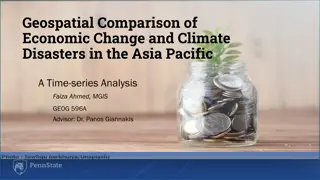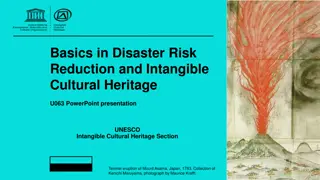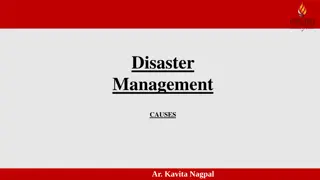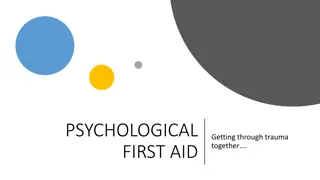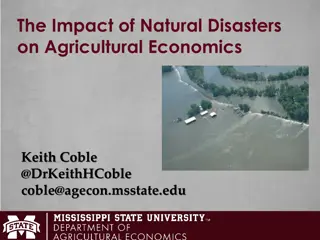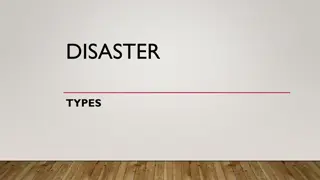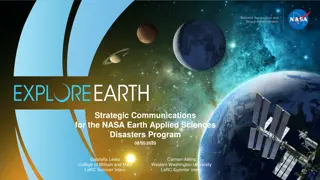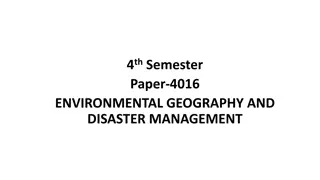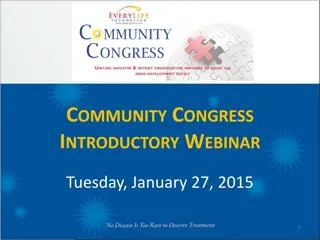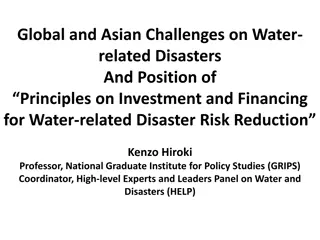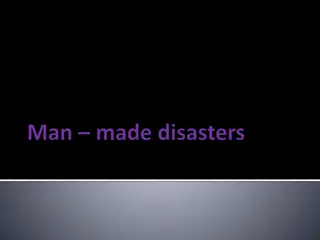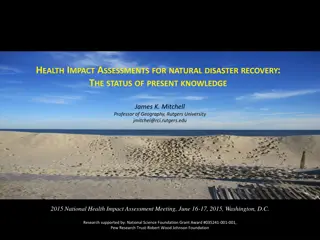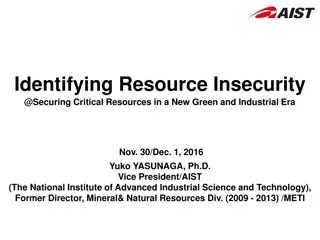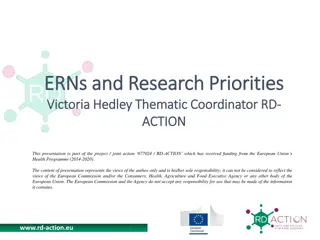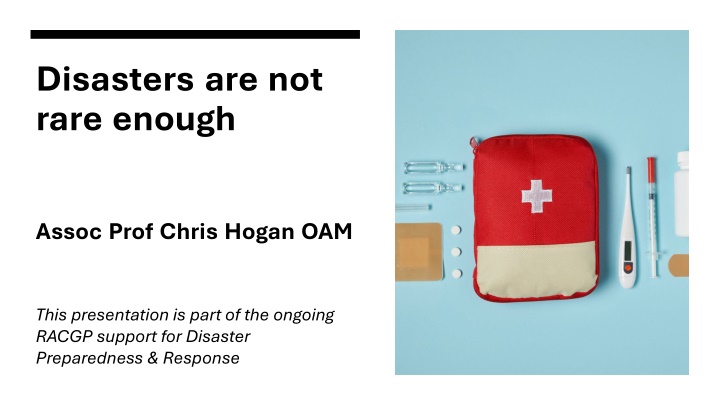
The Differences Between Disasters and Emergencies
Discover the distinct characteristics between disasters and emergencies in terms of frequency, response protocols, available resources, duration, risks to responders, communication challenges, and causative factors. Gain insights on how healthcare professionals like GPs play a crucial role in disaster preparedness and response to ensure optimal outcomes for everyone involved.
Download Presentation

Please find below an Image/Link to download the presentation.
The content on the website is provided AS IS for your information and personal use only. It may not be sold, licensed, or shared on other websites without obtaining consent from the author. If you encounter any issues during the download, it is possible that the publisher has removed the file from their server.
You are allowed to download the files provided on this website for personal or commercial use, subject to the condition that they are used lawfully. All files are the property of their respective owners.
The content on the website is provided AS IS for your information and personal use only. It may not be sold, licensed, or shared on other websites without obtaining consent from the author.
E N D
Presentation Transcript
Disasters are not rare enough Assoc Prof Chris Hogan OAM This presentation is part of the ongoing RACGP support for Disaster Preparedness & Response
Overview Incidence Disasters affect all regions including metro. How are GPs involved? Disasters are Different Key role of GPs Prepare, rehearse, respond Never waste a false alarm or a near miss as a means of preparation
Disasters can occur anywhere & any time Key Points Not just from extreme weather events Be Prepared with plans & resources Rehearse & Adapt Disasters are Different There are lots of resources
Heatwaves Disasters are not Rare enough Extreme Weather Events have affected 84% of Australians since 2019 Floods Bushfires Droughts Destructive Storms Thunderstorm Asthma Landslides
Mass evacuations Other Disasters in living memory Major Car, Bus, Train & Plane crashes Pandemics Epidemics & Pseudo-Epidemics Hazmat Incidents Mass Hysteria Terror & Criminal Incidents Lone wolf stabbing & shooting incidents Assault by vehicle Off gassing suicides Bomb threats Malicious Hoaxes
Metro Areas have Disasters too Terror incidents & lone wolf attacks can occur anywhere Our practice is 3 blocks from a major hospital. There was a major collision out the front with time critical patients I was in a major city & we got flooded Our city had major green wedges & plantations throughout. When they caught alight there was fire everywhere.
Disasters are Different-from Emergencies Disasters Emergencies 1. Not Rare Enough 1. Common enough 2. Chaotic & protocols can be fragile 2. While urgent have rehearsed protocols 3. Inadequate resources for optimal outcomes 3. Have adequate resources to treat everyone optimally 4. Last for days or weeks 4. Last about 1-2 hours 5. Responders are often at risk 5. Responders are rarely at risk 6. Communication is often difficult 6. Communication is normal 7. Often Multiple causative factors 7. Often only one cause
How do GPs get involved in Disasters? 1. As a victim. 1. In their own practice dealing with victims 2. As a friend/ relative of a victim 2. Caring for their patients at an Evacuation centre 3. As a responder at the site of a disaster 4. In their own practice dealing with victims 3. Caring for strangers at an Evacuation centre or another surgery 4. As a responder at an overwhelmed hospital We Always get involved during recovery
Survive Maintain Practice Continuity Key Role of GPs in Disasters. Keep Seeing Patients Our patients need us more than ever in disasters Even a minor contribution has a major impact All Disasters affect health across all body systems and result in increased morbidity and mortality within affected communities. We may get involved in direct incident response.
Standards insist on practice continuity even with disasters Resources Prepare a disaster plan based on local & general risks Prepare an emergency kit & access to patient records -Standards for General Practice -RACGP Publications Prepare ways to maintain communication Rehearse the disaster plan Activate it Review it after rehearsals & disasters
Disasters are chaotic Events are usually only obvious in retrospect Hindsight is only helpful if you are an investigator or historian Mis-steps & mistakes are inevitable Initially Very few have had military level training, rehearsals & experience. Suddenly , everyone has to act totally differently from their routine. People who have been crushed into mundane uniformity are expected to think for themselves in a totally new & deadly environment. Many cannot think for themselves- initially- and experience a baptism of fire
However, the experience that informs the plans are written in blood , sweat & tears A Good Plan is written in pencil As few plans survive first contact with a catastrophe Be prepared to adapt your plans in the presence of unexpected events Writing & rehearsing plans also helps you adapt.
While Disasters are chaotic, you can still contribute Take Home Message Think of this talk as you prepare your own Disaster Plans- for home, for work & any community groups you belong to. Prepare, rehearse, respond & adapt Never waste a false alarm or a near miss as a means of preparation


